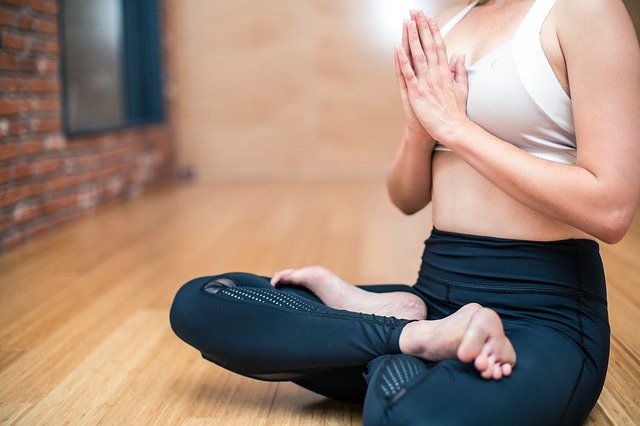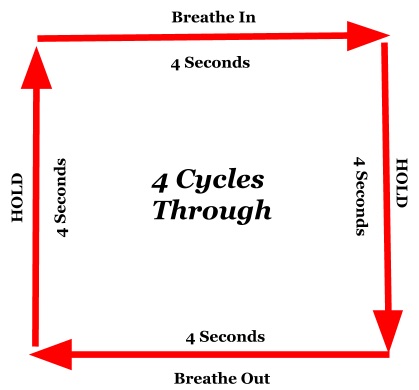
There are many benefits of musical meditation, but there are some things you need to keep in mind before you begin. Distractions should be avoided before you begin. Turn off your mobile phone, dim the lights and place it facedown. Use headphones to listen to the music through your ears and not the music. The music you hear in your head can help to calm down and focus. Here are some suggestions for creating your own musical meditation.
- Choose ambient music. Ambient music is best for beginners, but it can be a powerful aid in the process. Make sure you aren't too loud with the music and that the speakers are far enough away to not interrupt your breathing. The soothing sound of ambient music can provide stress relief and soften the experience. It's easy to see the benefits once you've mastered this technique. You don't have to be perfect; you can still practice musical meditation in the privacy of your home.

YouTube has plenty of good music for meditation. Aneal & Bradfield have an instrumental version of "A Moment of Peace", which provides soothing music. It features nature scenes and accompanying instruments. Ken Kern's "The Winding Path", which features beautiful images of Native American flutes and Native American flowers, has Ken Kern as the author. Another option is the Gayatri Govindarajan-produced Pure Deep Meditation.
No matter what method you choose to use, the experience is sure to be beneficial in many different ways. Another benefit is being able to stay focused and centered while listening to music. It is also an effective tool in relieving depression. If someone feels hopeless and depressed, it can lead to a feeling of helplessness. You can achieve this by using musical meditation. It's a great way to relax your mind and connect with yourself.
Musical meditation has many advantages. It can improve your mental health and decrease stress. It creates a soothing atmosphere that can aid your body in healing itself. You will be able to concentrate. You might not be aware that you are using music as a meditation tool. Even simple techniques can make it easy to relax. If you're new to the concept, try one of these techniques. It will be worth the time and effort. And remember that it's not just for the rich in mind.

When you're starting your meditation, it's best to choose music that will help you achieve the desired results. Positive music can boost your mood and improve your health. Music can help with heartbreak and meditation. Music can help you get through difficult situations or relationships. This music can help you to meditate in a calm and peaceful setting.
FAQ
These are the 7 secrets to a healthy life.
-
Take care of your health
-
Exercise regularly
-
Sleep well
-
Make sure to drink plenty of water.
-
Get enough sleep
-
Happy!
-
Smile often
What does it take to make an antibiotic work?
Antibiotics are drugs that destroy harmful bacteria. Antibiotics are used for treating bacterial infections. There are many kinds of antibiotics. Some are administered topically, while others can be taken orally.
Many people who have been exposed can be prescribed antibiotics. If someone has chicken pox, they might need to take an oral antibiotic in order to prevent shingles. A penicillin injection might be given to prevent pneumonia in someone who has had strep.
A doctor should give antibiotics to children. Children are more likely to experience side effects than adults from antibiotics.
Diarrhea is one of the most common side effects of antibiotics. Side effects of antibiotics include diarrhea, stomach cramps and nausea. These side effects usually disappear once treatment has ended.
Are there 5 ways to have a healthy lifestyle?
Healthy living means eating right, exercising regularly and getting enough sleep. It also involves managing stress and having fun. Avoiding sugar and processed foods is key to eating well. Exercise helps burn calories and strengthens muscles. Sleeping well improves concentration and memory. Stress management can reduce anxiety and depression. Fun keeps us happy and healthy.
How often should I exercise
Fitness is key to a healthy lifestyle. There is no set time limit for exercising. It is important to find something that you enjoy and stay with it.
If you work out three times a week, then aim to complete 20-30 minutes of moderate intensity physical activity. Moderate intensity means you'll still be breathing hard after you've finished. This type works out burns around 300 calories.
If you prefer to walk, go for 10 minute walks four days a week. Walking is low impact and easy on your joints.
If you'd rather run, try jogging for 15 minutes three times a week. Running is a great way to burn off excess calories and build muscle tone.
Start slowly if you aren't used to doing exercise. Start by doing 5 minutes of cardio each day, a few times per week. Gradually increase your cardio time until you reach the goal.
What are 10 healthy habits you can adopt?
-
Have breakfast every day.
-
Don't skip meals.
-
Eat a balanced, healthy diet.
-
Drink plenty of water
-
Take care of your body.
-
Get enough rest.
-
Avoid junk foods.
-
Do some exercise every day.
-
Have fun
-
Meet new people.
What is the difference between a virus and a bacterium?
A virus is an organism microscopic that can't reproduce outside its host cells. A bacterium is a single-celled organism that reproduces by splitting itself in two. Viruses measure only 20 nanometers in diameter, but bacteria is up to 1 millimeter in size.
Viruses are usually spread through contact with infected bodily fluids, including saliva, urine, semen, vaginal secretions, pus, and feces. Bacteria are usually spread through direct contact with contaminated objects or surfaces.
Viral infections can also be introduced to our bodies by a variety of cuts, scrapes or bites. They can also enter the body through the mouth, nose, eyes and ears, vaginal, rectum or anus.
Bacteria can enter our bodies through wounds, cuts, scrapes, burns, insect stings, or other breaks in our skin. They can also enter our bodies from food, water, soil, dust, and animals.
Viruses and bacteria both cause illness. But viruses do not have the ability to multiply within their hosts. They infect only living cells, causing illness.
Bacteria can spread within the host and cause illness. They can invade other areas of the body. We need antibiotics to get rid of them.
Statistics
- nutrients.[17]X Research sourceWhole grains to try include: 100% whole wheat pasta and bread, brown rice, whole grain oats, farro, millet, quinoa, and barley. (wikihow.com)
- According to the 2020 Dietary Guidelines for Americans, a balanced diet high in fruits and vegetables, lean protein, low-fat dairy and whole grains is needed for optimal energy. (mayoclinichealthsystem.org)
- The Dietary Guidelines for Americans recommend keeping added sugar intake below 10% of your daily calorie intake, while the World Health Organization recommends slashing added sugars to 5% or less of your daily calories for optimal health (59Trusted (healthline.com)
- According to the Physical Activity Guidelines for Americans, we should strive for at least 150 minutes of moderate intensity activity each week (54Trusted Source Smoking, harmful use of drugs, and alcohol abuse can all seriously negatively affect your health. (healthline.com)
External Links
How To
What does the word "vitamin" mean?
Vitamins are organic substances found naturally in food. Vitamins are essential for our bodies to absorb nutrients from the foods we eat. Vitamins cannot be made by the body; they must be taken from food.
There are two types vitamins: water soluble or fat soluble. Water-soluble vitamins dissolve easily when they are dissolved in water. Some examples include vitamin C,B1 and B2 vitamins (thiamine), B2 and riboflavin, B3 and B6 vitamins (niacin), folic acids, biotin, pantothenic acids, and cholesterol. The liver and fat soluble vitamins are stored within the liver and in fatty tissue. Some examples include vitamin D and E, K, A and beta carotene.
Vitamins are classified according to their biological activity. There are eight major types of vitamins:
-
A – Essential for normal growth, and the maintenance of good health.
-
C – essential for proper nerve function.
-
D - Vital for healthy bones and teeth
-
E is necessary for good vision, reproduction.
-
K - required for healthy muscles and nerves.
-
P - Vital for strong bones and teeth.
-
Q – aids digestion of iron and iron absorption
-
R – Required for the formation of red blood vessels.
The recommended daily allowance for vitamins (RDA) varies based on gender, age, and physical conditions. The U.S. Food and Drug Administration (FDA) sets the RDA values.
For example, the RDA for vitamin A is 400 micrograms per dayfor adults 19 years or older. Pregnant women require 600 micrograms daily to support fetal development. Children ages 1-8 require 900 micrograms per day. Children under 1 year old require 700 micrograms daily, while infants over one year old need 500 micrograms every day. This decreases between 9 and 12 months.
Children aged 1-18 years need 800 micrograms daily, while children overweight require 1000 micrograms per days. Children who are severely obese or underweight will need 1200 micrograms each day.
Children 4-8 years old who have anemia must consume 2200 micrograms of Vitamin C daily.
2000 micrograms daily is required for adults over 50 to maintain their general health. Mothers who are pregnant, nursing, or have a high nutrient need will require 3000 micrograms a day.
1500 micrograms is the recommended daily intake for adults aged 70+, who lose approximately 10% of muscle each year.
Women who are pregnant and lactating need more nutrients than the RDA. Pregnant women need 4000 micrograms per dayduring pregnancy and 2500 micrograms per day after delivery. Breastfeeding mothers need 5000 mg per day when breastmilk is being produced.